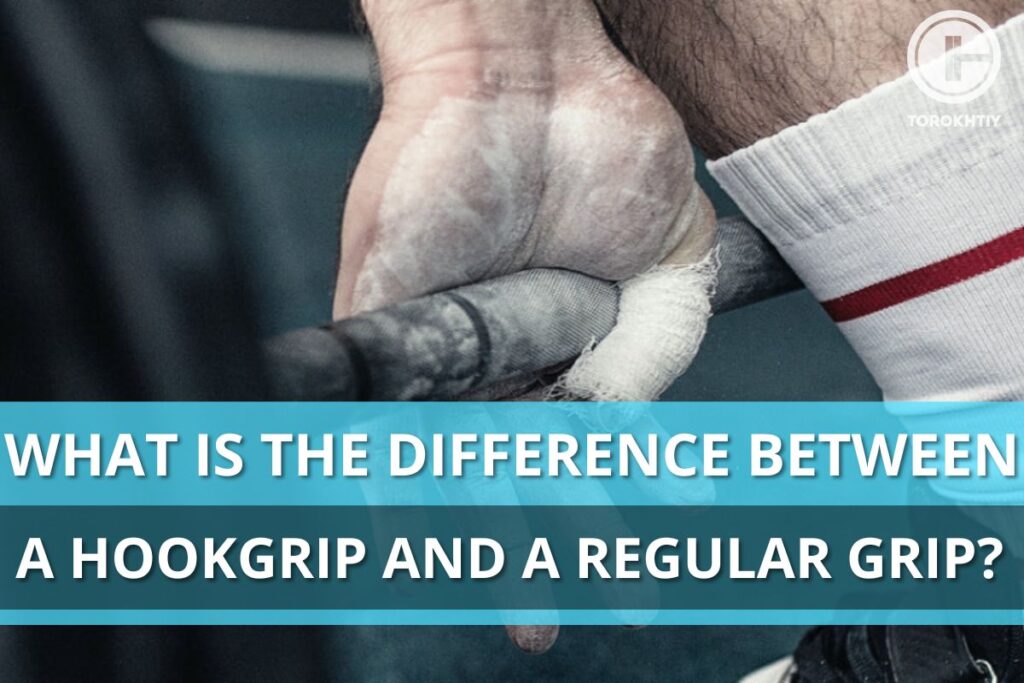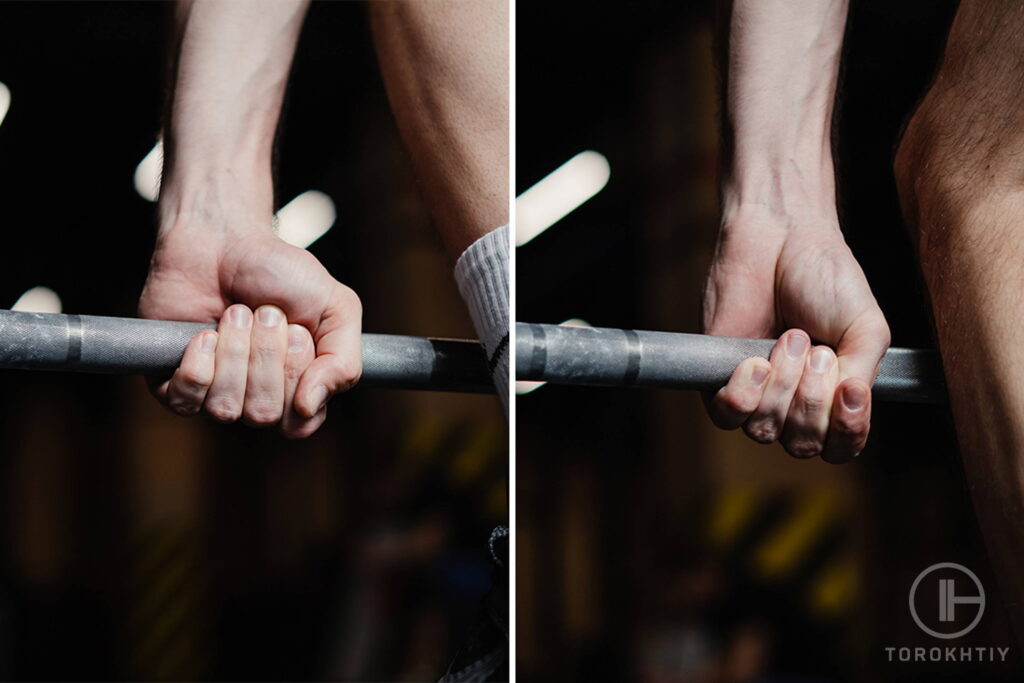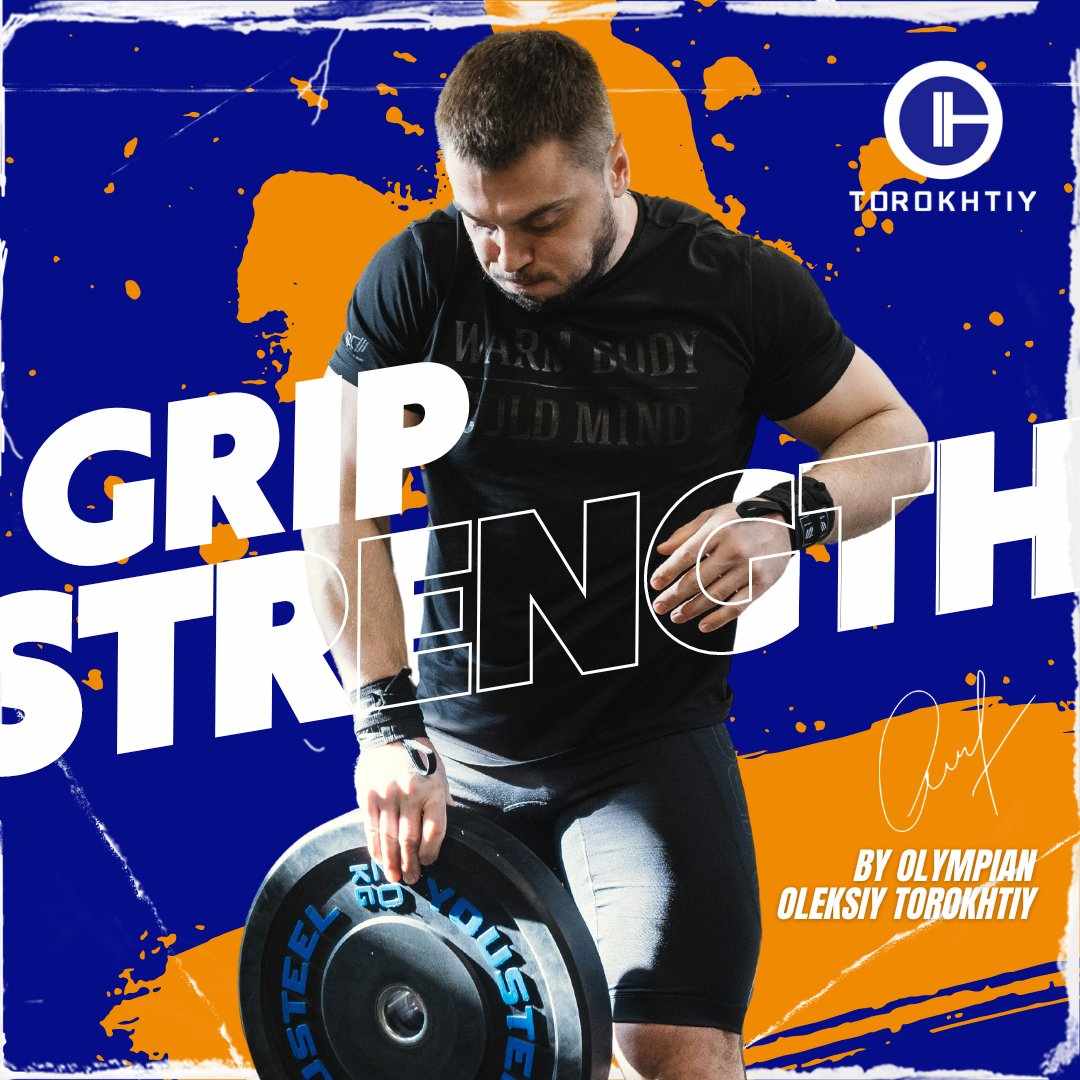What is the difference between a hookgrip and a regular grip?
Author:
Unlock your full potential by engaging with our experts and community! Have questions about your fitness journey or looking for expert advice on weightlifting techniques? Don’t hesitate — leave a comment below and Oleksiy Torokhtiy will provide a personalized answer and insights to help you reach your goals.
Torokhtiy is reader-supported. Some links are affiliate links, and we may earn a commission at no extra cost to you. See our disclosure page for details.

Let’s try to answer this question.
There are numerous reasons why holding the barbell with a hookgrip is obvious. Almost every athlete who tries to snatch a barbell of more than 100 kg (wide grip) has faced the problem of holding it in a regular grip, especially in the moment of power position when you give the bar maximum acceleration. It is difficult to hold it, and often it is impossible – it falls right out of your grip. Even if you were blessed with big hands and long fingers, you still won’t be able to perform a clear and high-quality movement. The reason is a temporary “clamping” (tension) of your palms and all the muscles of your upper limbs. This has several consequences.
Follow us!

Free!
Get a 2-week Weightlifting Program as a bonus for the subscription to kickstart your training plan!

Free!
Firstly, it impairs the intramuscular coordination of the upper limbs and the entire body. Secondly, it reduces the transmission of power from your legs and back to the barbell, a part of which is extinguished in “clenched” hands. Thirdly, you will always be focusing on holding the barbell in your hands more and more with every single rep, because of the fatigue in your hand muscles, instead of on a concerted effort of leg and back muscles. As a result of the reasons mentioned above, the movement can become impossible.
You may like it:
- Detailed Olympic Weightlifting Program For Beginners
- 12-Week Weightlifting Program For Women (Detailed Example)
- Create Your Olympic Weightlifting Program (Examples Included)
Briefly then, let’s list the advantages and disadvantages of a hookgrip:

Advantages:
- There is no rapid fatigue, especially in terms of the muscles of the forearm. It can often be seen in functional athletes’ technique.
-
Eliminates the “stiffness” of the movement, especially in SNATCH, caused by “clogging” due to fatigue or weakness of the arms, which in turn:
- would worsen the intra-muscular coordination of the upper limbs and the whole body;
- would reduce the transfer of energy from your legs and back to the barbell, part of which is extinguished in “clenched” arms;
- takes your focus away from a concerted effort of leg and back muscles as you concentrate instead on keeping a grip on the barbell;
- The ability to lift any weight in such a grip, which is impossible in other techniques.
Disadvantages:
- Not easy to use initially;
- Can be painful when you’re first learning it.
You might be interested in:
Why Trust Us?
With over 20 years in Olympic weightlifting, strength training, nutrition coaching, and general fitness our team does its best to provide the audience with ultimate support and meet the needs and requirements of advanced athletes and professional lifters, as well as people who strive to open new opportunities and develop their physical capabilities with us.
By trusting the recommendations of our certified experts in coaching, nutrition, and sports training programming, as well as scientific consultants, and physiotherapists, we provide you with thorough, well-considered, and scientifically proven content. All the information given in the articles concerning workout programming, separate exercises, and athletic performance, in general, is based on verified data.
The product testing process is described in more detail here.
Author: Oleksiy Torokhtiy
Olympic Weightlifting Champion, PhD in Sport Science
Best Results: Snatch – 200 kg,
C&J – 240 kg
Oleksiy Torokhtiy is a professional athlete boasting 20 years of experience in Olympic weightlifting. With multiple European and World titles under his belt, he has showcased his prowess in two Olympic Games (Beijing 2008 and London 2012). Upon concluding his illustrious career, Oleksiy dedicated himself to coaching. By 2022, he had conducted over 200 weightlifting seminars worldwide. He is the visionary behind an international sportswear and accessories brand known for its motto, “Warm Body Cold Mind.” Additionally, he is an esteemed author and the creator of a series of training programs and eBooks.




Still have questions after reading our article? Unlock your full potential by engaging with our experts and community! Don’t hesitate — leave a comment below and Oleksiy Torokhtiy will provide a personalized answer and insights to help you reach your goals.